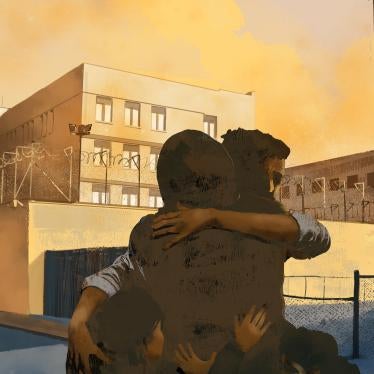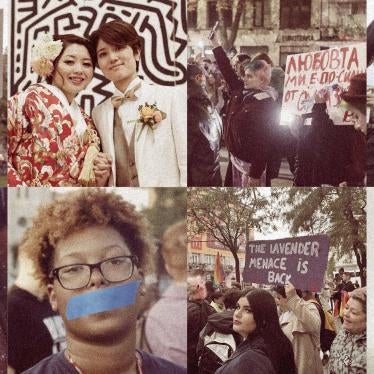The movie Zero Dark Thirty, which depicts the hunt for Osama bin Laden, wrongly suggests that torture was an ugly but useful tactic in the fight against terrorism. It also falsely implies that information obtained through torture was critical to finding bin Laden. As the film-makers note, it is a fictionalized account, not a documentary. The use of torture violates US law and the country’s international legal obligations – even when “authorized” by the US government. Its use damaged the reputation of the United States and its ability to promote human rights, while giving cover to abusers worldwide who use such techniques against political opponents and activists. Torture was counter-productive to the fight against terrorism, producing false and misleading information that may in fact have slowed the search for bin Laden and diverted attention from genuine security threats.
The full scope and nature of US government torture remains hidden, in part because the US has kept many details of the program secret. The Senate Select Committee on Intelligence in December adopted a 6,000-page classified report detailing the CIA’s detention and interrogation program, a program under which much of the torture and other ill-treatment occurred. The committee should seek – and the Obama administration should support – declassification and release of the report, both to counter misinformation about the supposed value of “enhanced interrogation techniques” and to provide the public with a full accounting of past US government policy and practice.
1) Zero Dark Thirty is a fictionalized account, not a documentary.
“I think what’s important to remember is it’s a movie and not a documentary. ... There’s a lot of compressions, there’s a lot of composite characters and it’s an interpretation – and again, it’s not a documentary.” – Kathryn Bigelow, director of Zero Dark Thirty
“The film takes significant artistic license, while portraying itself as being historically accurate. What I want you to know is that Zero Dark Thirty is a dramatization, not a realistic portrayal of the facts.” – Michael Morell, CIA acting director
2) Zero Dark Thirtygives the false impression that torture was an ugly but useful tactic in the fight against terrorism.
“Recent public opinion polls suggest that a narrow majority of Americans believe that torture can be justified as an effective form of intelligence gathering. This is false. We know that cruel, inhuman, and degrading treatment of prisoners is an unreliable and highly ineffective means of gathering intelligence… The use of torture in the fight against terrorism did severe damage to America’s values and standing that cannot be justified or expunged. It remains a stain on our national conscience.” – Senators Dianne Feinstein, Carl Levin, and John McCain in a December 2012 letter to Sony Pictures
“There was no actionable intelligence gained from using enhanced interrogation techniques on Abu Zubaydah that wasn’t, or couldn’t have been, gained from regular tactics. In addition, I saw that using these alternative methods on other terrorists backfired on more than a few occasions – all of which are still classified.” – Ali Soufan, former agent in FBI’s Joint Terrorism Task Force
3) Zero Dark Thirty suggests – incorrectly – that information obtained through torture was critical to finding Osama bin Laden.
“We believe the film is grossly inaccurate and misleading in its suggestion that torture resulted in information that led to the location of Usama bin Laden.” – Senators Feinstein, Levin, and McCain in letter to Sony Pictures
“Nearly 10 years of intensive intelligence work led the CIA to conclude that Bin Ladin was likely hiding at the compound in Abbottabad, Pakistan. There was no one ‘essential and indispensible’ key piece of information that led us to this conclusion. Rather, the intelligence picture was developed via painstaking collection and analysis. Multiple streams of intelligence – including from detainees, but also from multiple other sources – led CIA analysts to conclude that Bin Ladin was at this compound. Some of the detainees who provided useful information about the facilitator/courier’s role had been subjected to enhanced interrogation techniques. Whether those techniques were the ‘only timely and effective way’ to obtain such information is a matter of debate and cannot be established definitively…
“Let me further point out that we first learned about the facilitator/courier’s nom de guerre from a detainee not in CIA custody in 2002. It is also important to note that some detainees who were subjected to enhanced interrogation techniques attempted to provide false or misleading information about the facilitator/courier. These attempts to falsify the facilitator/courier’s role were alerting.
“In the end, no detainee in CIA custody revealed the facilitator/courier’s full true name or specific whereabouts. This information was discovered through other intelligence means.” – Leon Panetta, former CIA director, in a May 2011 letter to Sen. John McCain
“In fact, the use of ‘enhanced interrogation techniques’ on Khalid Sheik Mohammed produced false and misleading information.” – Sen. John McCain
4) The US should reveal the full scope and nature of US government torture. The Senate Select Committee on Intelligence recently adopted a 6,000-page classified report detailing the program. The committee should seek declassification and release of the report, and the Obama administration should support that.
“The report is based on a documentary review of more than 6 million pages of CIA and other records, extensively citing those documents to support its findings.” - Sen. Dianne Feinstein, Chairman of the Senate Intelligence Committee, in a statement regarding the committee’s report on the CIA interrogation program







